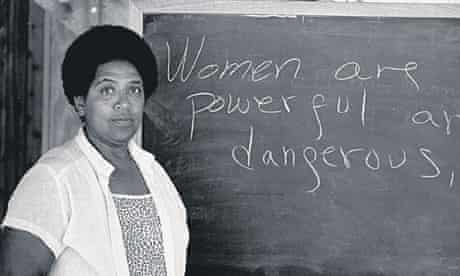Racism and skin colour: the many shades of prejudicePosted in Articles, Media Archive, Social Science on 2012-01-01 22:33Z by Steven |
Racism and skin colour: the many shades of prejudice
The Guardian
2011-10-04
Bim Adewunmi
Deeply entrenched attitudes towards colour, and the increasing promotion of skin-lightening products, are placing a ‘horrible burden’ on dark-skinned women
Next week, at the international black film festival in Nashville, Bill Duke and D Channsin Berry will premiere their new documentary, Dark Girls. The film looks at the everyday experiences of dark-skinned black women in America. The blurb from the official site promises the directors will “[pull] back our country’s curtain to reveal that the deep-seated biases and hatreds of racism—within and outside of the black American culture—remain bitterly entrenched”.
When the film-makers released a preview of Dark Girls in May, it spread like wildfire across social media sites and black entertainment blogs. Commenters wrote about being moved to tears by the nine minutes of film they’d seen and many mentioned how long in coming such a film was. Why did the documentarians decide to tackle this subject and why now? For Duke, a veteran of Hollywood—co-star of Car Wash and Predator—it was down to personal experience. “It came from me being a dark-skinned black man in America, and also observing what [dark-skinned] relatives like my sister and niece have gone through. The issue exists externally of our race, but a lot of it comes within the race itself and our perception of ourselves.” Berry recalls being called “darkie” at elementary school by his fellow classmates, “and even some family members were like: ‘He is really dark. Why is he so dark?’ It left a scar. So when Bill came to me, within the first couple of seconds, I was on board.”
Shadism lurks in our collective peripheral vision and rears its ugly head every so often. Earlier this year, there was a Twitter storm over a promotional flyer for a party in Ohio whose theme was “Light Skin vs Dark Skin”. In May, the Afro Hair and Beauty show in London had a stall advertising and selling skin-lightening products. The stall was called Fair and White. In an interview with black newspaper the Voice, the co-organiser of the show, Verna McKenzie, said that she had “a responsibility to cater to the marketplace”. Two years ago, makeup giant L’Oréal was accused of lightening the skin of singer Beyoncé in ads (it denied the claim), and last year, Elle magazine was accused of doing the same to actor Gabourey Sidibe (it said “nothing out of the ordinary” had been done to the photograph). Last month, a study conducted at Villanova University in Pennsylvania found that lighter-skinned women were more likely to receive shorter prison sentences than darker-skinned women, receiving approximately 12% less time behind bars…
…Heidi Safia Mirza, professor of equalities studies in education at the Institute of Education, University of London, says: “Pigmentocracy in the Caribbean as a kind of social hierarchical system emulated from the slave days where there was favouritism if you were fairer, particularly if you were a woman.” Mirza, who has been conducting her own research looking at young black and minority ethnic women in schools, tells the story of a Sierra Leonean teenager who reported being made fun of because of her very dark skin. “It was not uncommon for dark-skinned girls to be vilified and teased and called names like ‘blick’, which means ‘blacker than black’.”
Debbie Weekes-Bernard, senior research and policy analyst for education at the Runnymede Trust, wrote Shades of Darkness, a report on the way “darker-skinned girls reflect upon themselves against lighter-skinned (in this case mixed-parentage) girls” as part of her PhD. The subjects were girls between the ages of 12 and 16…
Read the entire article here.



